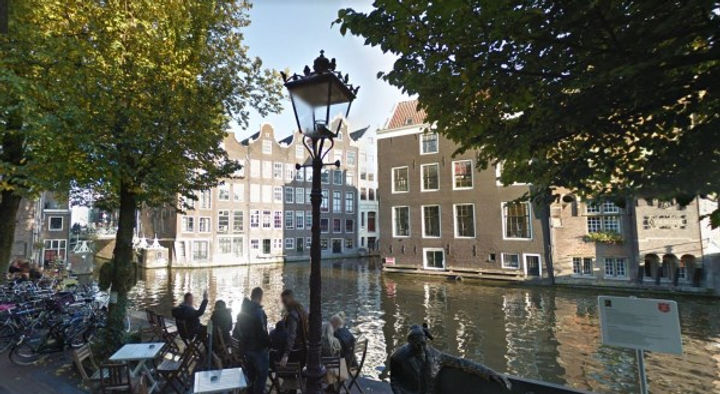Armbrug Bridge
Located in one of Amsterdam’s most picturesque spots, Armbrug (Arm bridge) is named after the Oudezijds Armsteeg (Old Side Arm alley).
‘Arm’ in Dutch can mean poor or, well, arm. In this instance it means the latter, as the alley leads to and from the bend in Warmoesstraat.
In the past the Armbrug was unofficially referred to as the Provicialenbrug (Provincials bridge), as sketches and paintings of the view from this spot were used to draw provincials to Amsterdam.
To-date this is still one of the most photographed and painted views in Amsterdam: the Kolksluice leading to the Oudezijds Kolk, and part of the St. Nicholas Church.
To the left, in front of the sluice, is Cafe-Restaurant De Haven van Texel (The harbor of Texel). From its terrace one gets a good impression of why Amsterdam is referred to as the Venice of the North. The backs of the houses at Zeedijk are standing in the water of the Oudezijds Achterburgwal.
The outside wall of the De Haven van Texel belongs to the City of Amsterdam. It sports nine gablestones from old, torn down houses in this area.
The Armbrug is also a favorite spot from which to photograph the Leeuwenburgh house at Oudezijds Voorburgwal 14, built in 1605.
The building to the right of the bridge is Vredenburg. Built in 1835 as a Roman-Catholic house of the elderly, it was later turned into a regular house. In the 17th century a very popular inn, with the same name, was located on this very spot. Earlier, a salt merchant — and before that — a beer brewery could be found here.






